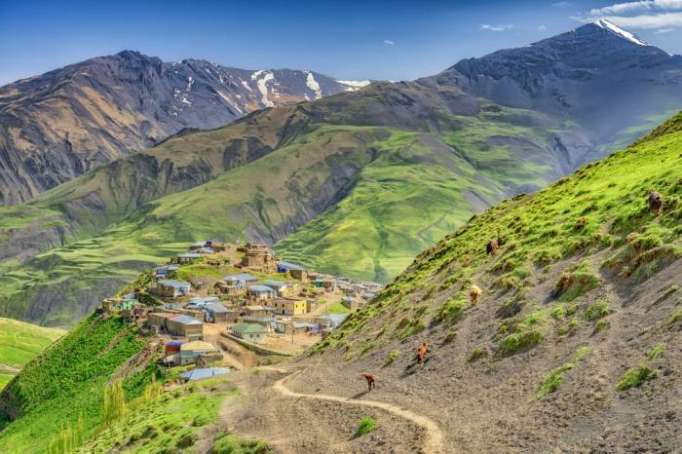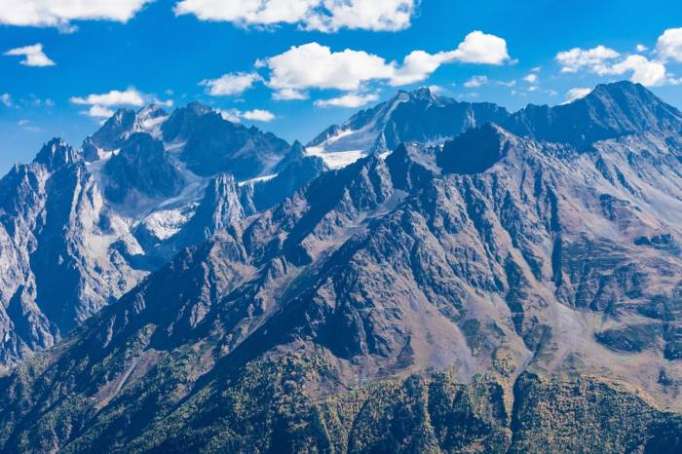Affordable
After Azerbaijan’s oil boom, prices soared as the country’s economy skyrocketed. Oil prices dropped, and so did the value of the Manat falling to almost 50% of its value in 2015. Visiting Azerbaijan is now affordable with daily costs of travel rarely exceeding $60 including accommodation, food and drink, admission fees and entertainment. Backpackers should be able to get by on between $30 and $40 per day.
The Azerbaijan eVisa
The Azerbaijan visa once took weeks involving trips to embassies and hefty fees. But, the recent eVisa has made the formalities faster, easier and cheaper. Tourists of 100 nationalities can apply for the Azerbaijan tourist visa, which costs $20 plus a $3 service fee taking approximately three business days to process. The ease of getting a visa combined with affordability make good reasons to visit Azerbaijan.
Mud volcanoes
More than a third of the world’s mud volcanoes are along the Absheron Peninsula. Mud or sedimentary volcanoes by their technical name, erupt plumes of mud after pockets of subterranean gas build pressure forcing it to the surface. Azerbaijan’s Turaghai and Boyuk Khanizadagh are among the world’s largest at 700 metres (2297 feet). The volcanoes tend to bubble away slowly causing the sides to build up over time.

The almost alien-like appearance of Mud Volcanoes at Gobustan | © Arkady Zakharov/Shutterstock
The locals
Similar to their Georgian neighbours, the culture in Azerbaijan makes people open and welcoming. They give the best hospitality possible. One Airbnb host in Baku insisted on walking to the supermarket and carrying our shopping bags, despite being on his lunch break with an outside temperature of 40°C. Another in Ganja, Azerbaijan’s second city, took us sightseeing and back to his village for the night without expecting anything in return. Younger Azerbaijanis speak some English and are almost always happy to help.
Mountain villages
The Caucasus Mountains stretch across parts of northern Azerbaijan and Georgia creating a variety of historical and cultural villages. Quba, in Azerbaijan’s northeast, is a favourite tourist destination. Nearby Laza, Xinaliq and Buduq communities make interesting villages to visit to experience a culture almost entirely lost to time. The region is also home to the East Caucasus Mountain Jews. It’s advisable to visit as part of a tour.

A traditional Mountain Village (Xinaliq) near Quba | © mbrand85/Shutterstock
The Azerbaijan Grand Prix
Baku hosted the Grand Prix for the second time in 2017 as the global superstars of Formula One descended on Azerbaijan’s capital. The Baku City Circuit covers 51 laps around the 6 km (3.7 miles) track in the capital’s long straight streets. Fans from around the world came for the occasion.

The 2016 European Grand Prix in Baku | © Dilara Mammadova/Shutterstock
The historical, traditional and modern
The architecture in Azerbaijan is varied. From Baku’s modern Flame Towers and opulent House of Government to medieval palaces and temples dotted here and there. The Walled City of Baku combines elements of medieval and traditional Islamic Azerbaijan styles. Europeans, attracted by Baku’s first oil boom in the 19th-century, designed the Old City with baroque and gothic architecture. And the same as other former socialist republics, like those found in Eastern Europe and the Balkans, you’ll face the endless apartment blocks typical of the 20th-century.

The medieval old town contrasting with the modern Flame Towers | © Elena Mirage/Shutterstock
Fire, fire, fire
Azer translates to fire. In ancient times, the locals worshipped fire and built temples around the endless flames originating from subterranean gas. Zoroastrianism, one of the oldest religions, originated in Azerbaijan. Ateshgah, a fire temple in the Baku suburbs, was once a significant site. Fire is still an essential part of Azerbaijani identity and culture with the 2012 Flame Towers in Baku paying respect to their heritage.
Azerbaijan tea culture
Azerbaijanis have a deep relationship with tea and perform ancient ceremonies for guests showing warmth, friendliness and excellent hospitality. If you’re invited to someone’s house, hosts serve spiced black tea with a cube of sugar. Traditionally, people dip the sugar into the drink and take a bite before sipping. According to local lore, the origins date back to medieval times. Rulers were afraid of poison. If the sugar reacted when dipped in tea, they believed someone was trying to kill them.

Samovar and a glass of Azerbaijan tea | © Chinara Rasulova/Shutterstock
Traditional carpets
Carpet weaving in Azerbaijan dates back to antiquity. Family tradition and techniques pass from one generation to the next by word of mouth. Men sheared the sheep and women dyed and weaved the carpets. Most use wool, a combination of green, red, yellow, cream and blue form complex motifs and patterns, each unique and with its own story. Today, Azerbaijan has seven carpet producing regions.
Hiking in the Caucasus
The Caucasus marks the boundary of eastern Europe and western Asia crossing a handful of countries, even more autonomous republics and five time zones. And it’s one of the most culturally and linguistically diverse places in the world. Within a short distance of Baku, you could be hiking in the Caucasus among steep gorges, ravines and plains stretching far into the distance. The diversity in landscape makes every hike different and gives you the chance to explore the vast natural beauty of Azerbaijan.

Read the original article on theculturetrip.com.
More about: Azerbaijan
















































